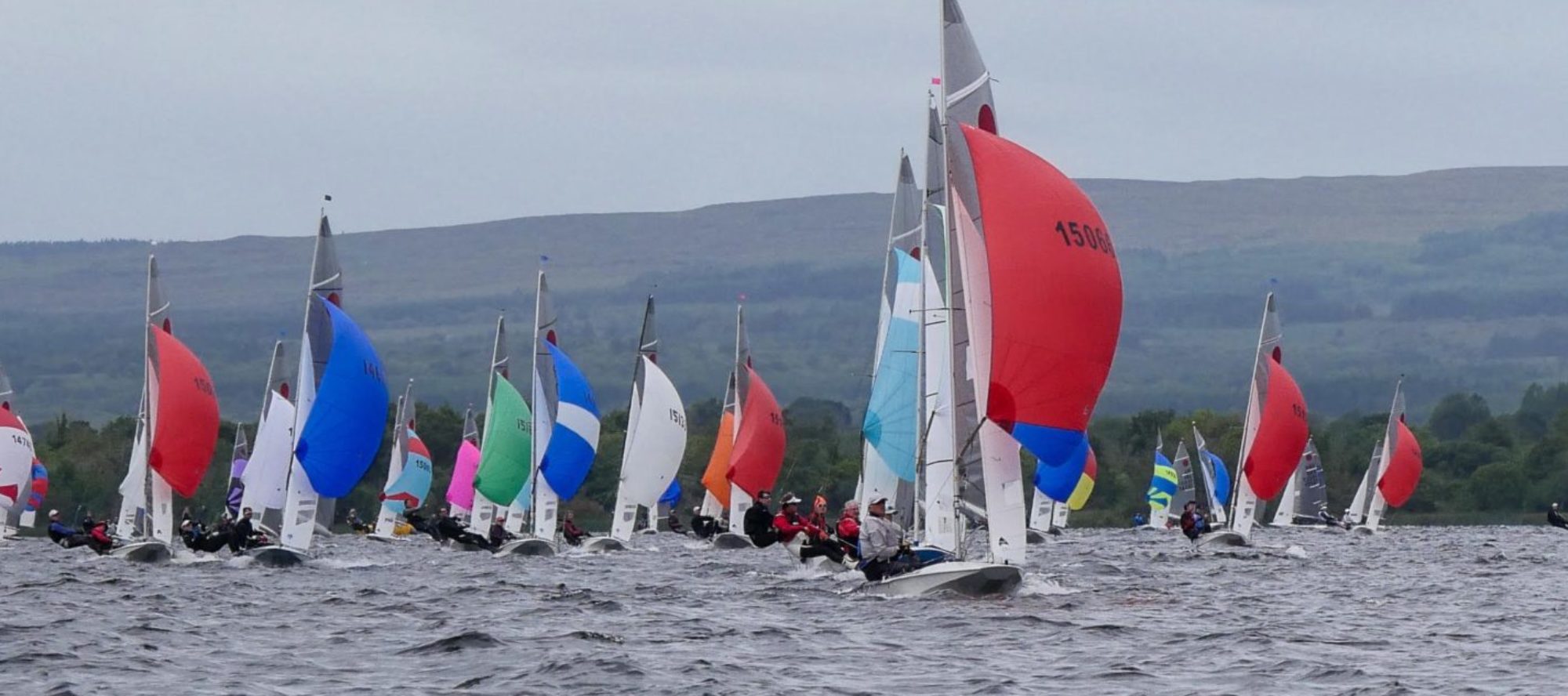The Irish Fireball Association is really keen to attract new sailors, young and not so young, into the fleet. There has never been a better time for owners to part with boats which haven’t been sailed in recent years and while the class appreciates how wrenching it is to let a Fireball go, now is the time for dormant boats to be taken out of garages and gardens and placed into new, active, hands. With our website now revamped thanks to Stephen Oram, we will be actively posting boats for sale as soon as they become available and will help sellers and buyers to get dormant boats back into action.
So – what should a prospective buyer look for when inspecting a boat? The first thing to check is the builder and the materials. In recent years the top builders in the Northern hemisphere have been Winder Boats in the UK, Weathermark boats in the UK, and Duvoisin boats from Switzerland. Decent boats have also been built by Severn Boats (UK) and others, but tend not to be quite as competitive as the first three listed. Older GRP boats built by Rondar should be avoided as they tend to get soft with age, unlike the first three which will remain stiff and competitive for very many years. Ideally buyers should try to get wide-bow “White” or “Composite” boats. All white boats from Winders etc are built in FRP and often have additional Kevlar stiffening. They remain competitive for well over 20 years if looked after. Almost as equally competitive are “composite” boats – these have FRP hulls but timber decks. The main downside is the maintenance of the timber decks – though some would also argue that these boats are a tiny bit heavier at bow and stern. It is worth noting that early composite boats may be narrow bowed, similar to all plywood-built boats which are all narrow-bowed. While these tend not to perform as well in big seas, due to less buoyancy in the bow area, they may actually work well for the flatter lake conditions of the worlds in LDYC. An all-ply boat may be a thing of beauty but will probably only appeal to someone who really enjoys maintenance and has a garage for winter storage.
While inspecting the hull and deck prospective buyers should look for any damage, badly done repairs, or soft spots. It is quite common in the earlier “white” boats to see some gelcoat, or in the case of Duvoisin, paint issues. While these do not look pretty the issue is primarily cosmetic and it shouldn’t be a reason not to buy a boat. White Winder boats up to about no.14800 often had slight gelcoat issues, caused by the polyester gelcoat layer not wanting to stick properly to the FRP epoxy sandwich hull. The issue can be managed by ongoing TLC and is relatively easy to keep on top of, but does take up a bit of time. The Duvoisin boats were sprayed rather than gel coated so are easily maintained by sanding and respraying any flaking paint. Cans in matching colours are relatively easy to get made up – one helpful supplier is J&S Autoparts and paints in Dun Laoghaire.
Looking inside the hull the prospective buyer is greeted by a comprehensive system of control lines. While these are easily replaced if tired or frayed the cost of replacement should be factored into your calculations. These days wire controls, such as kicker and rig tensioners, can easily be replaced by dyneema. The mast should be inspected to make sure it is straight and the boom should be checked for any cracks.
Since sails are an important part of the value of a boat these should be inspected and factored into the price. Modern mainsails are typically Kevlar composite but good conditions white sails could still be competitive.
Last, but not least, the combi-trailer should be inspected. The trolley should be examined closely for rust, especially at key supportive joints. The trailer wheels, tyres and bearings should be checked.
When all these elements are factored in it should be possible to agree a fair price for the boat. For someone who has the time to do some minor repairs and replace some control lines it may well be possible to secure a bargain. While a new Fireball would cost in the region of €15k plus a boat needing a little TLC might change hands for under €2k. With most Fireballs really well fitted out with top class Harken hardware there are still some bargains out there to be had.
And lastly, make sure the boat has a measurement certificate or that one is easily available
